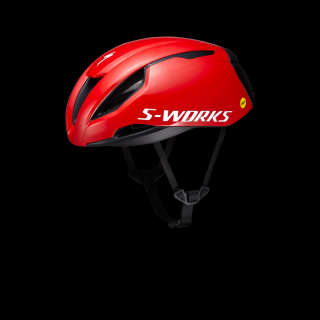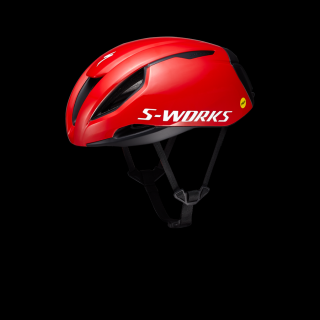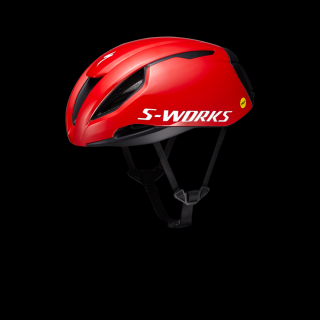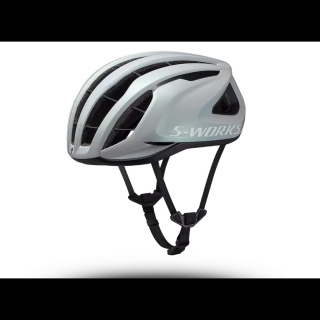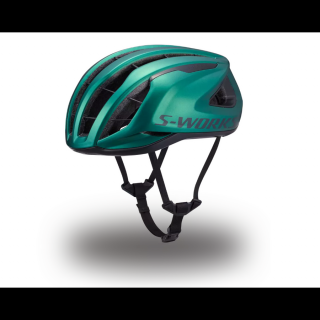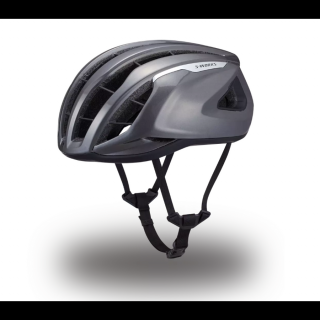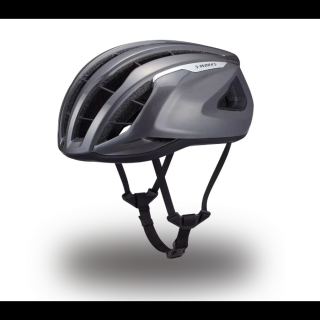Specialized S-Works Evade 3 Vivid Red Méret: M 55-59cm
When a helmet is impacted, its job is to dissipate the energy of the impact. The conventional approach to helmet design is that more foam (EPS) means better energy management. We re-wrote the book on cycling helmet design by innovating beyond foam. Woven aramid “cables” traverse the helmet and are anchored to carbon fiber side panels. Upon impact, the AirCage technology* works as a suspension bridge and is designed to distribute localized forces throughout the helmet. The Occipital Base Adjustment op
- Webáruház: e-bike pedelec értékesítés
- Az ár: 133 900 Ft
Specialized S-Works Evade 3 Vivid Red Méret: L 58-62cm
When a helmet is impacted, its job is to dissipate the energy of the impact. The conventional approach to helmet design is that more foam (EPS) means better energy management. We re-wrote the book on cycling helmet design by innovating beyond foam. Woven aramid “cables” traverse the helmet and are anchored to carbon fiber side panels. Upon impact, the AirCage technology* works as a suspension bridge and is designed to distribute localized forces throughout the helmet. The Occipital Base Adjustment op
- Webáruház: e-bike pedelec értékesítés
- Az ár: 133 900 Ft
Specialized S-Works Evade 3 Vivid Red Méret: S 51-56cm
When a helmet is impacted, its job is to dissipate the energy of the impact. The conventional approach to helmet design is that more foam (EPS) means better energy management. We re-wrote the book on cycling helmet design by innovating beyond foam. Woven aramid “cables” traverse the helmet and are anchored to carbon fiber side panels. Upon impact, the AirCage technology* works as a suspension bridge and is designed to distribute localized forces throughout the helmet. The Occipital Base Adjustment op
- Webáruház: e-bike pedelec értékesítés
- Az ár: 133 900 Ft
Specialized S-Works Prevail 3 Hyper Dove Grey Méret: M 55-59cm
When a helmet is impacted, its job is to dissipate the energy of the impact. The conventional approach to helmet design is that more foam (EPS) means better energy management. We re-wrote the book on cycling helmet design by innovating beyond foam. Woven aramid “cables” traverse the helmet and are anchored to carbon fiber side panels. Upon impact, the AirCage technology* works as a suspension bridge and is designed to distribute localized forces throughout the helmet. The Occipital Base Adjustment op
- Webáruház: e-bike pedelec értékesítés
- Az ár: 120 900 Ft
Specialized S-Works Prevail 3 Hyper Dove Grey Méret: S 51-56cm
When a helmet is impacted, its job is to dissipate the energy of the impact. The conventional approach to helmet design is that more foam (EPS) means better energy management. We re-wrote the book on cycling helmet design by innovating beyond foam. Woven aramid “cables” traverse the helmet and are anchored to carbon fiber side panels. Upon impact, the AirCage technology* works as a suspension bridge and is designed to distribute localized forces throughout the helmet. The Occipital Base Adjustment op
- Webáruház: e-bike pedelec értékesítés
- Az ár: 120 900 Ft
Specialized S-Works Prevail 3 Pine Green Méret: M 55-59cm
When a helmet is impacted, its job is to dissipate the energy of the impact. The conventional approach to helmet design is that more foam (EPS) means better energy management. We re-wrote the book on cycling helmet design by innovating beyond foam. Woven aramid “cables” traverse the helmet and are anchored to carbon fiber side panels. Upon impact, the AirCage technology* works as a suspension bridge and is designed to distribute localized forces throughout the helmet. The Occipital Base Adjustment op
- Webáruház: e-bike pedelec értékesítés
- Az ár: 120 900 Ft
Specialized S-Works Prevail 3 Smoke Méret: L 58-62cm
When a helmet is impacted, its job is to dissipate the energy of the impact. The conventional approach to helmet design is that more foam (EPS) means better energy management. We re-wrote the book on cycling helmet design by innovating beyond foam. Woven aramid “cables” traverse the helmet and are anchored to carbon fiber side panels. Upon impact, the AirCage technology* works as a suspension bridge and is designed to distribute localized forces throughout the helmet. The Occipital Base Adjustment op
- Webáruház: e-bike pedelec értékesítés
- Az ár: 120 900 Ft
Specialized S-Works Prevail 3 Smoke Méret: M 55-59cm
When a helmet is impacted, its job is to dissipate the energy of the impact. The conventional approach to helmet design is that more foam (EPS) means better energy management. We re-wrote the book on cycling helmet design by innovating beyond foam. Woven aramid “cables” traverse the helmet and are anchored to carbon fiber side panels. Upon impact, the AirCage technology* works as a suspension bridge and is designed to distribute localized forces throughout the helmet. The Occipital Base Adjustment op
- Webáruház: e-bike pedelec értékesítés
- Az ár: 120 900 Ft
